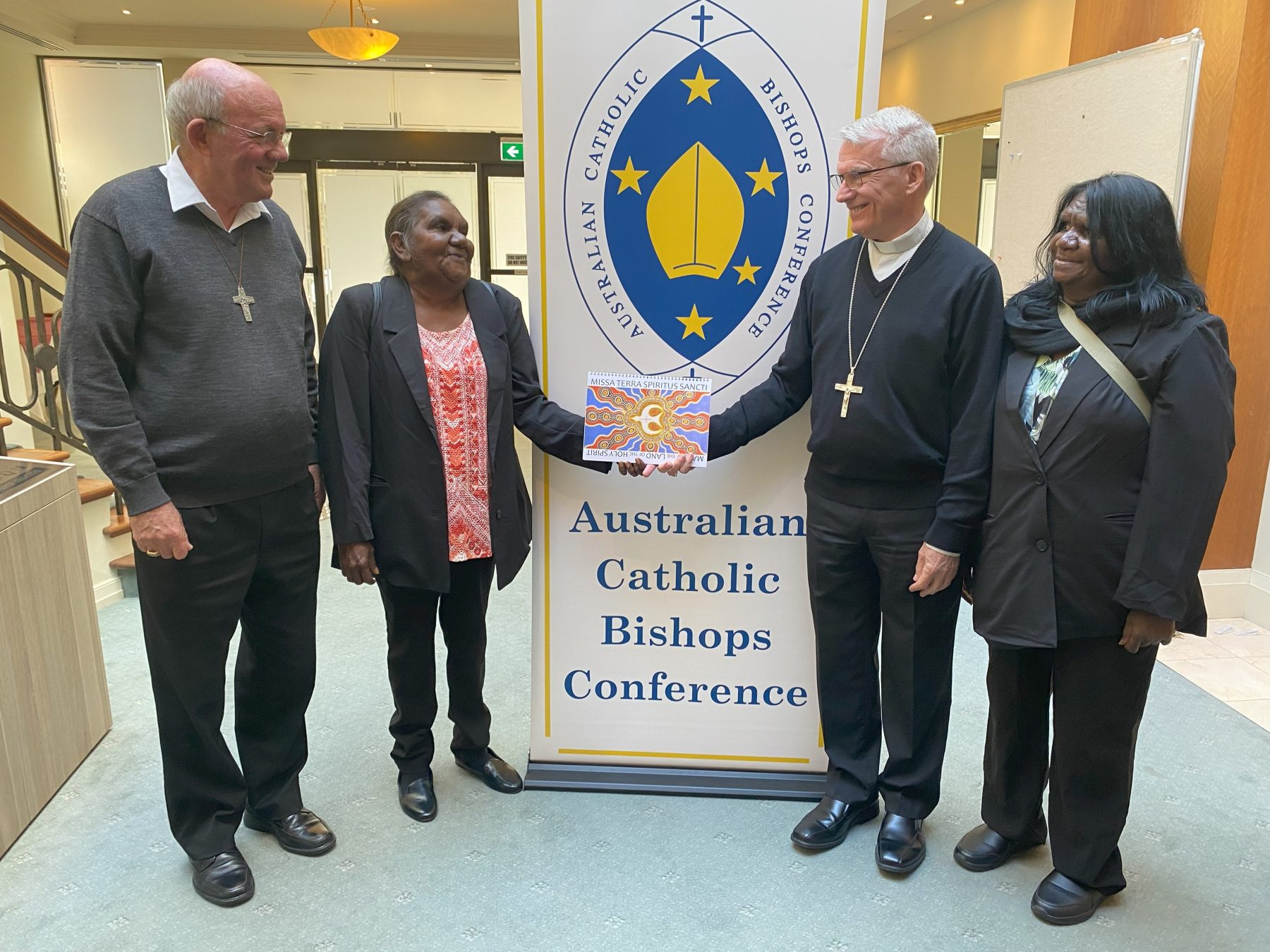
You will have heard that on 7 May 2024, the Australian Bishops approved the use of the Mass of the Land of the Holy Spirit (MLHS) – more usually known as the Missa Kimberley – for use in the Diocese of Broome (Western Australia).
The Missa had been prepared and developed from the Roman Rite in Bidyadanga by local elders and Fr Kevin McKelson. Maureen Yawana and Madeline Jadai came across from Bidyadanga to formally present the MLHS to the Australian Bishops who were gathered for their plenary at Mary MacKillop Place, North Sydney. They shared with the Bishops memories of Old Japulu, Fr Kevin, who spent long hours with their forebears working on the Mass. Before they formally presented the Mass, Maureen and Madeleine blessed each of the bishops and prayed for their deliberations.
Our Sr Maureen Donnelly, who spent fifteen years ministering in the Broome and Darwin dioceses, graciously hosted our visitors. As we sat at table each evening, I couldn’t help but remember Sr Pat Sealey, who served at Bidyadanga, and all our Sisters who for 60 years encouraged, assisted with and celebrated the Missa Kimberley.
In 2012, I received a grant from the then Mary MacKillop Foundation (now Mary MacKillop Today), that enabled me to visit the Kimberley, to explore the contribution Aboriginal Ritual offers to the celebration of Christian ritual. This enabled me to visit several communities where our Sisters were serving at the time. On more than one occasion the Missa was celebrated, but I particularly remember the Balgo community, where the only language sung was Kukadja, and women elders had designated leadership roles in the liturgy, including the water and final blessings. It was after this visit that I felt inspired to explore and research the Missa Kimberley. I found it easy to work with Aboriginal Catholics in the Kimberley because of the deep trust and love they already had for our Sisters.
Although I never met Fr Kevin, I have come to know him through his meticulous study of Aboriginal life and his passion and unbounded energy to ensure that his people could worship God in their own way. This began back in the 1960s when he accepted the call to missionary work in the Kimberley. As the Missa developed, he consulted widely, not just within his own mission, but amongst scholars and other church leaders, even taking the Missa to the Vatican, in the hope that it might be approved.
However, when he died in 2011, his wish had not yet become a reality. It would be another 12 years of work before the Catholic community of the Diocese of Broome, and a small group of liturgists who accepted my invitation, would work with Bishop Michael Morrissey to formally present the MLHS to the bishops for approval.
It was a historic occasion on 7 May for the Church, when the Australian Bishops overwhelmingly approved the Aboriginal MLHS as an official liturgy for use in the Diocese of Broome. This is a wonderful moment, not just for the Catholics who have been celebrating it for so long, but also for the Australian Church.
It is our task now to make final preparations for its presentation to the Dicastery for Worship and Discipline of the Sacraments in Rome for confirmation. Please keep up the prayers. Already it is sparking the liturgical imagination of scholars, and especially First Nation Catholics, not only in Australia, but throughout the universal church.
Carmel Pilcher rsj
